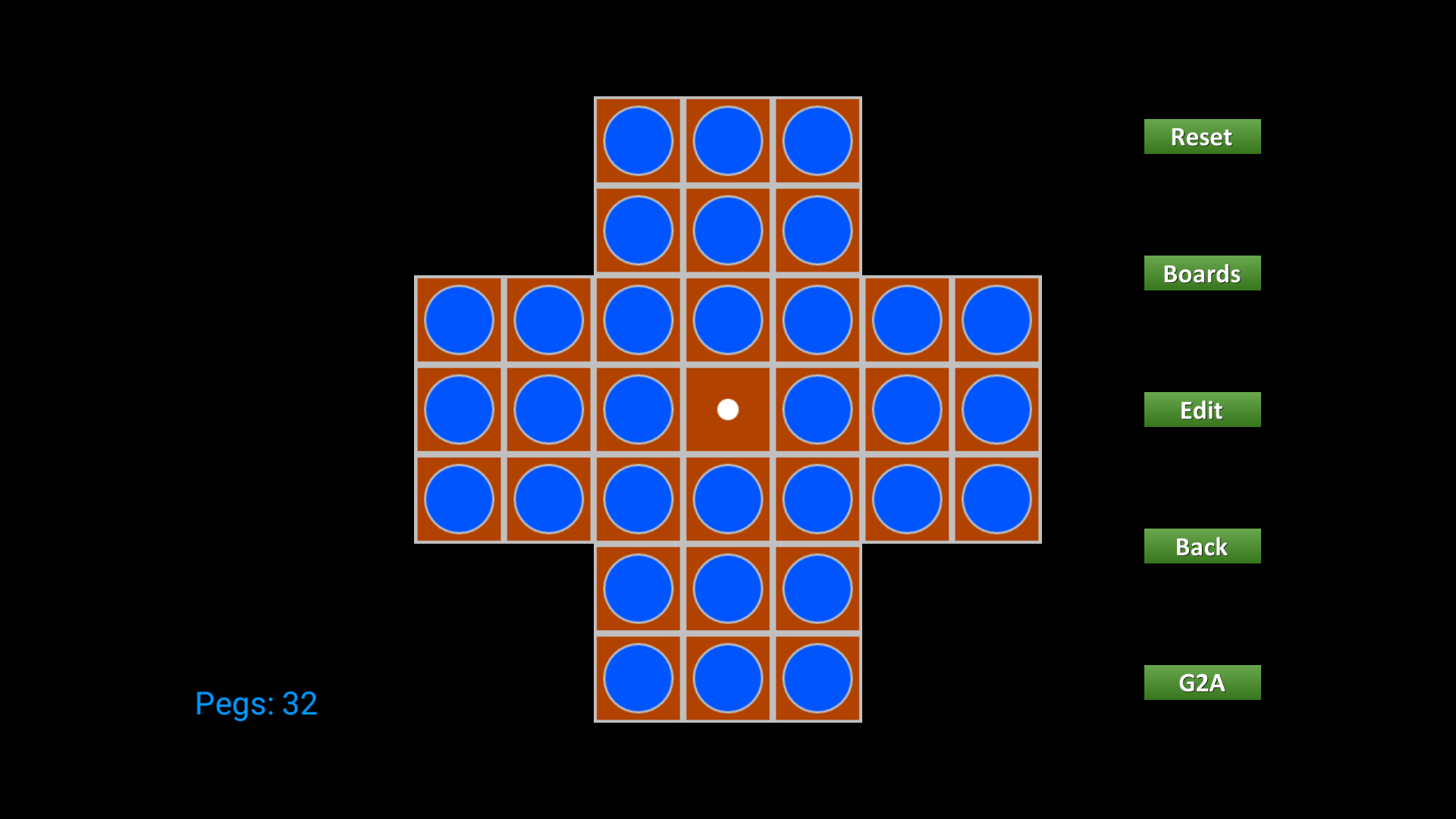

- #Peg solitaire solving java update
- #Peg solitaire solving java code
- #Peg solitaire solving java windows
You can find the PeekMessage loop in the traceStep() implementation in the CSolitaireView class.
#Peg solitaire solving java windows
This means that it periodically yields execution control to Windows using a PeekMessage loop. In fact, it is likely that you might want a worker thread to carry out the search while the main thread "keeps the window alive".īy the way, our program uses a single thread and performs "background processing" instead. Note that it is declared volatile, in case you would set it in another thread than the one executing the search. It is possible to stop the search by setting the public attribute m_abort to true. In our example, it is used to "animate" the board, showing the pieces quickly moving on it during the search. It will be called before every call to doStep() or undoStep(), and can be used to trace the search path. Virtual void traceStep( const Step *pc_step, Optionally, you can override this method too: It returns true when it finds a solution, it returns false after having traversed the whole search tree, in vain, just to ascertain that there is no possible solution. This method performs the recursive search. We do this simply by calling the public method solve(). Once all the abstract methods have been overridden, we are ready to use our derived class to seek a solution. It must be realized by a class (in our example, the Move class) holding all the information needed to represent a game's move. The class Step is just an empty interface. One has to override this method in order to save the solution's step. When a solution is found, the algorithm calls saveStep() for every step of the solution. The solved() method must be overridden in order to tell if the current configuration of the game is a solution (returns true) or not (returns false).
#Peg solitaire solving java update
The next two methods, doStep() and undoStep() is where we update the game's state (in our example, where we change the position of the pieces on the board): doStep() must perform the step indicated by its parameter, while undoStep() must roll the game back to the previous state, undoing the specified step. Note that these methods are declared const, in that they don't have to modify the state of the game: firstStep() returns a pointer to an object of class Step, and nextStep() modifies its argument. We accomplish this task by implementing the first two methods listed above, firstStep() and nextStep(). We must be able to specify the possible steps (or moves) that can be made at a given state of the game. In the Solitaire puzzle, for example, a step consists of a move of a piece on the board, according to the game's rules. We know that backtracking applies to problems that can be solved by performing a sequence of steps. the current disposition of the pieces on the board. In our example, the Backtrack class is realized by the Solitaire class, which represents the game board and keeps track of the game state, i.e. Virtual void saveStep( const Step *pc_step, Virtual void undoStep( const Step *pc_step) = 0 Virtual void doStep( const Step *pc_step) = 0 Virtual bool nextStep(Step *p_step) const = 0 To use this class, you have to derive your own class from it and implement the following abstract methods: It was written mainly for teaching purposes in order to take the backtracking logic out of the details of a particular problem. The Backtrack class is an extremely general implementation of the DFS (Depth First Search) backtracking algorithm.
#Peg solitaire solving java code
The source code comprises of the template class Stack, a simple MFC based typed stack. It also provides an object oriented vestment to backtracking, in the form of a reusable class holding all the backtracking logic.

The main purpose of this program is to illustrate the concepts of recursive function, inherently recursive problem and backtracking. The program, in fact, implements a simple backtracking algorithm to search for a solution starting from the current disposition of the pieces on the board.

This program lets you play Solitaire puzzle (also known as Peg Solitaire Puzzle) with two big advantages over a real gaming table:


 0 kommentar(er)
0 kommentar(er)
